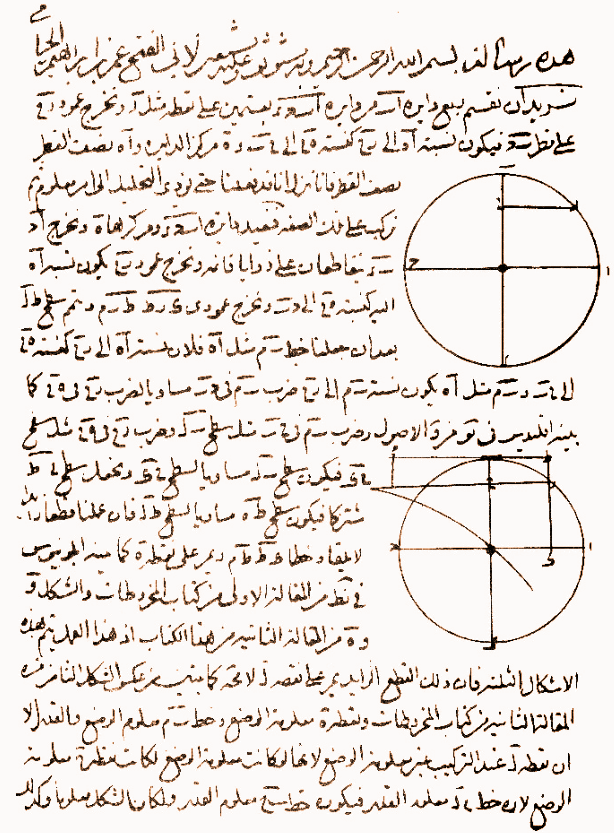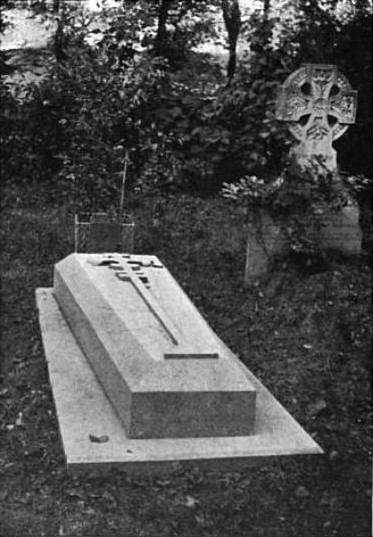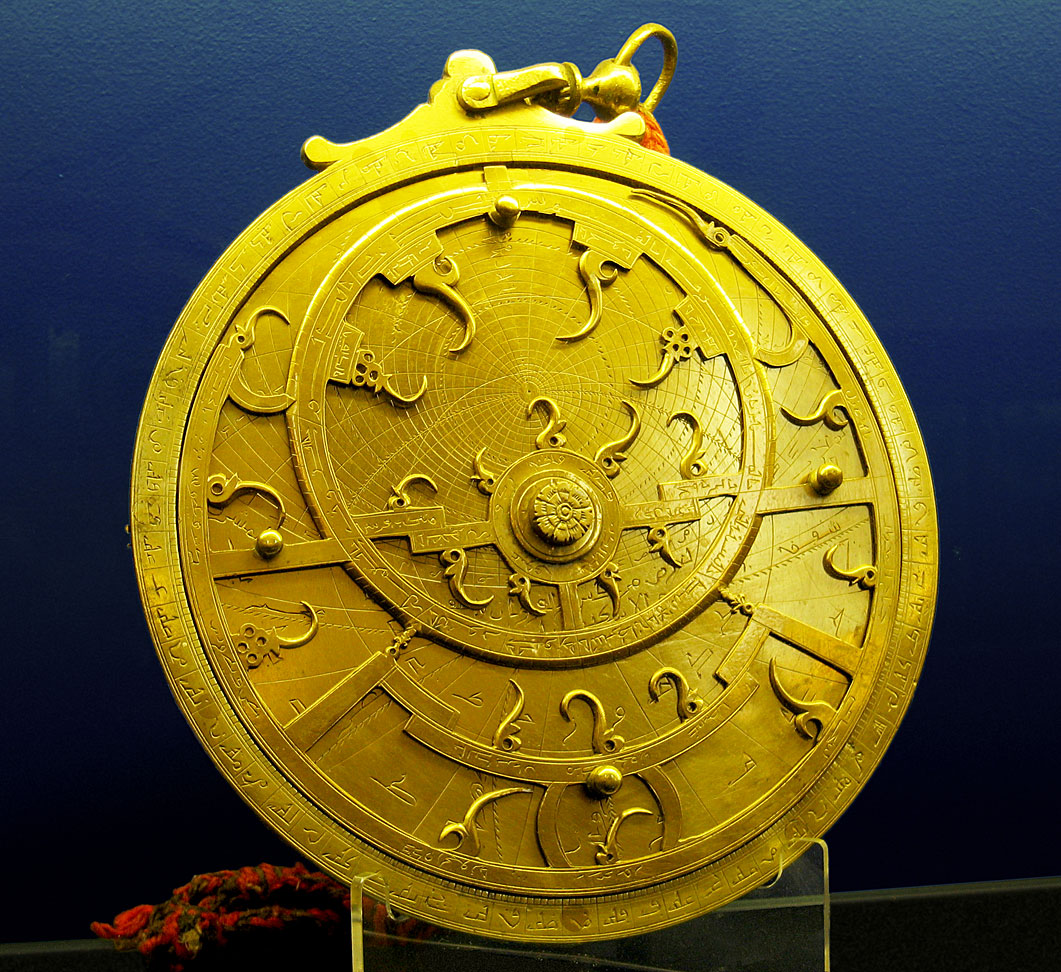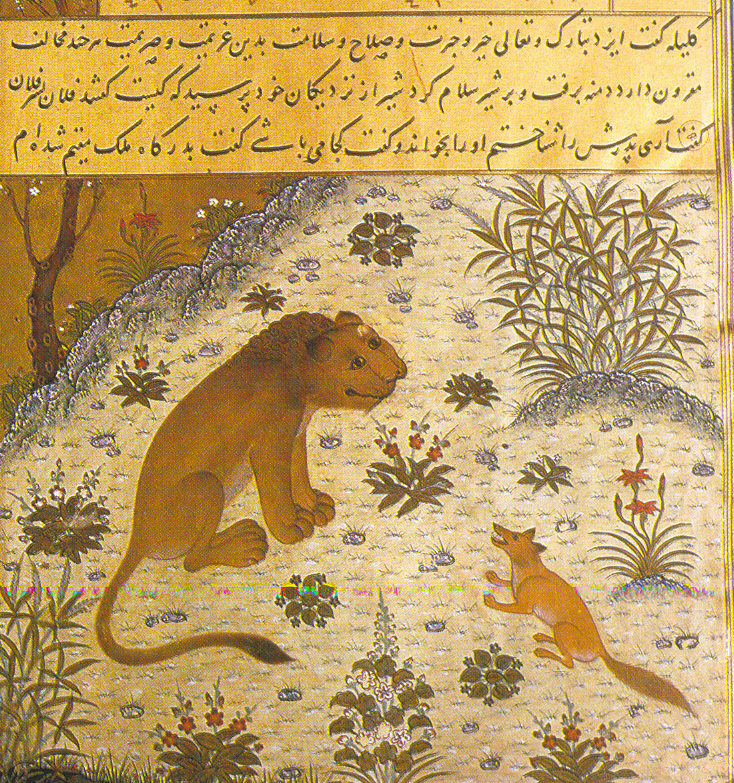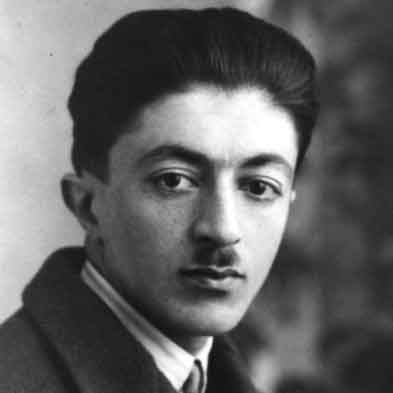|
KhayyГЎm
GhiyДҒth al-DД«n AbЕ« al-FatбёҘ КҝUmar ibn IbrДҒhД«m NД«shДҒbЕ«rД« (18 May 1048 вҖ“ 4 December 1131) (Persian: ШәЫҢШ§Ш« Ш§Щ„ШҜЫҢЩҶ Ш§ШЁЩҲШ§Щ„ЩҒШӘШӯ Ш№Щ…Шұ ШЁЩҶ Ш§ШЁШұШ§ЩҮЫҢЩ… Ш®ЫҢШ§Щ… ЩҶЫҢШҙШ§ШЁЩҲШұп»Ҝ), commonly known as Omar Khayyam (), was a Persian poet and polymath, known for his contributions to mathematics, astronomy, philosophy, and Persian literature. He was born in Nishapur, Iran and lived during the Seljuk era, around the time of the First Crusade. As a mathematician, he is most notable for his work on the classification and solution of cubic equations, where he provided a geometric formulation based on the intersection of conics. He also contributed to a deeper understanding of Euclid's parallel axiom. As an astronomer, he calculated the duration of the solar year with remarkable precision and accuracy, and designed the Jalali calendar, a solar calendar with a very precise 33-year intercalation cycle which provided the basis for the Persian calendar that is still ... [...More Info...] [...Related Items...] OR: [Wikipedia] [Google] [Baidu] |
Nishapur
Nishapur or Neyshabur (, also ) is a city in the Central District (Nishapur County), Central District of Nishapur County, Razavi Khorasan province, Razavi Khorasan province, Iran, serving as capital of both the county and the district. Nishapur is the second most populous city of the province in the northeast of Iran, situated in a fertile plain at the foot of Binalud Mountains, Binalud Mountain Range. It has been the historic capital of the Western Quarter of Greater Khorasan, the historic Capitals of Persia, capital of the 9th-century Tahirid dynasty, the initial capital of the 11th-century Seljuk Empire, and is currently the capital city of Nishapur County and a historic Silk Road city of Greater Iran, cultural and Economy of Iran, economic importance in Iran and the Greater Khorasan region. Nearby are turquoise mines that have supplied the world with turquoise of the finest and the highest quality for at least two millennia. The city was founded in the 3rd century by ... [...More Info...] [...Related Items...] OR: [Wikipedia] [Google] [Baidu] |
Edward FitzGerald (poet)
Edward FitzGerald or Fitzgerald (31 March 180914 June 1883) was an English poet and writer. His most famous poem is the first and best-known English translation of '' The Rubaiyat of Omar Khayyam'', which has kept its reputation and popularity since the 1860s. Life Edward FitzGerald was born Edward Purcell at Bredfield House in Bredfield, some two miles north of Woodbridge, Suffolk, England, in 1809. In 1818, his father, John Purcell, assumed the name and arms of his wife's family, the FitzGeralds. His elder brother John used the surname Purcell-Fitzgerald from 1858. The change of family name occurred shortly after FitzGerald's mother inherited a second fortune. She had previously inherited over half a million pounds from an aunt, but in 1818, her father died and left her considerably more than that. The FitzGeralds were one of the wealthiest families in England. Edward FitzGerald later commented that all of his relatives were mad; further, that he was insane as well, but wa ... [...More Info...] [...Related Items...] OR: [Wikipedia] [Google] [Baidu] |
Mathematics In Medieval Islam
Mathematics during the Golden Age of Islam, especially during the 9th and 10th centuries, was built upon syntheses of Greek mathematics (Euclid, Archimedes, Apollonius) and Indian mathematics (Aryabhata, Brahmagupta). Important developments of the period include extension of the place-value system to include decimal fractions, the systematised study of algebra and advances in geometry and trigonometry. The medieval Islamic world underwent significant developments in mathematics. Muhammad ibn Musa al-KhwДҒrizmД« played a key role in this transformation, introducing algebra as a distinct field in the 9th century. Al-KhwДҒrizmД«'s approach, departing from earlier arithmetical traditions, laid the groundwork for the arithmetization of algebra, influencing mathematical thought for an extended period. Successors like Al-Karaji expanded on his work, contributing to advancements in various mathematical domains. The practicality and broad applicability of these mathematical metho ... [...More Info...] [...Related Items...] OR: [Wikipedia] [Google] [Baidu] |
Cubic Equation
In algebra, a cubic equation in one variable is an equation of the form ax^3+bx^2+cx+d=0 in which is not zero. The solutions of this equation are called roots of the cubic function defined by the left-hand side of the equation. If all of the coefficients , , , and of the cubic equation are real numbers, then it has at least one real root (this is true for all odd-degree polynomial functions). All of the roots of the cubic equation can be found by the following means: * algebraically: more precisely, they can be expressed by a ''cubic formula'' involving the four coefficients, the four basic arithmetic operations, square roots, and cube roots. (This is also true of quadratic (second-degree) and quartic (fourth-degree) equations, but not for higher-degree equations, by the AbelвҖ“Ruffini theorem.) * trigonometrically * numerical approximations of the roots can be found using root-finding algorithms such as Newton's method. The coefficients do not need to be real ... [...More Info...] [...Related Items...] OR: [Wikipedia] [Google] [Baidu] |
Astronomy In The Medieval Islamic World
Medieval Islamic astronomy comprises the astronomical developments made in the Islamic world, particularly during the Islamic Golden Age (9thвҖ“13th centuries), and mostly written in the Arabic language. These developments mostly took place in the Middle East, Central Asia, Al-Andalus, and North Africa, and later in the Far East and India. It closely parallels the genesis of other Islamic sciences in its assimilation of foreign material and the amalgamation of the disparate elements of that material to create a science with Islamic characteristics. These included Greek, Sassanid, and Indian works in particular, which were translated and built upon. Islamic astronomy played a significant role in the revival of ancient astronomy following the loss of knowledge during the early medieval period, notably with the production of Latin translations of Arabic works during the 12th century. A significant number of stars in the sky, such as Aldebaran, Altair and Deneb, and astrono ... [...More Info...] [...Related Items...] OR: [Wikipedia] [Google] [Baidu] |
Nizami Aruzi
Ahmad ibn Umar ibn AlД«, known as NizamД«-i ArЕ«zД«-i SamarqandД« () and also Arudi ("The Prosodist"), was a poet and prose writer who flourished between 1110 and 1161. He is particularly famous for his ''Chahar Maqala'' ("Four Discourses"), his only work to fully survive. While living in Samarqand, which was part of Persia at the time, AbuвҖҷl-RajaКҫ Ahmad b. КҝAbd-Al-б№ўamad, a ''dehqan'' in Transoxiana, told Nezami of how the poet Rudaki was given compensation for his poem extolling the virtues of Samanid ''Amir'' Nasr I, Nasr b. Ahmad. Life A Persians, Persian native of Samarqand in Transoxiana, his date of birth and death is uncertain. He was most likely born at the end of the 11th century. What little is known of his life can only be found in his book ''Chahar Maqala''. He spent most of his time in Greater Khorasan, Khorasan and Transoxiana, and served as a court-poet to the Ghurids for 45 years. In 1110/1, he was at Samarqand, where he gathered material about the Persian ... [...More Info...] [...Related Items...] OR: [Wikipedia] [Google] [Baidu] |
Persian Literature
Persian literature comprises oral compositions and written texts in the Persian language and is one of the world's oldest literatures. It spans over two-and-a-half millennia. Its sources have been within Greater Iran including present-day Iran, Iraq, Afghanistan, Pakistan, the Caucasus, and Turkey, regions of Central Asia (such as Tajikistan), South Asia and the Balkans where the Persian language has historically been either the native or official language. For example, Rumi, one of the best-loved Persian poets, born in Balkh (in modern-day Afghanistan) or Wakhsh (in modern-day Tajikistan), wrote in Persian and lived in Konya (in modern-day Turkey), at that time the capital of the Seljuks in Anatolia. The Ghaznavids conquered large territories in Central and South Asia and adopted Persian as their court language. There is thus Persian literature from Iran, Mesopotamia, Azerbaijan, the wider Caucasus, Turkey, Pakistan, Bangladesh, India, Tajikistan and other parts of Cent ... [...More Info...] [...Related Items...] OR: [Wikipedia] [Google] [Baidu] |
Persian Language
Persian ( ), also known by its endonym and exonym, endonym Farsi (, FДҒrsД« ), is a Western Iranian languages, Western Iranian language belonging to the Iranian languages, Iranian branch of the Indo-Iranian languages, Indo-Iranian subdivision of the Indo-European languages. Persian is a pluricentric language predominantly spoken and used officially within Iran, Afghanistan, and Tajikistan in three mutual intelligibility, mutually intelligible standard language, standard varieties, respectively Iranian Persian (officially known as ''Persian''), Dari, Dari Persian (officially known as ''Dari'' since 1964), and Tajik language, Tajiki Persian (officially known as ''Tajik'' since 1999).Siddikzoda, S. "Tajik Language: Farsi or not Farsi?" in ''Media Insight Central Asia #27'', August 2002. It is also spoken natively in the Tajik variety by a significant population within Uzbekistan, as well as within other regions with a Persianate society, Persianate history in the cultural sphere o ... [...More Info...] [...Related Items...] OR: [Wikipedia] [Google] [Baidu] |
Saccheri
Giovanni Girolamo Saccheri (; 5 September 1667 вҖ“ 25 October 1733) was an Italian Jesuit priest, scholastic philosopher, and mathematician. He is considered the forerunner of non-Euclidean geometry. Biography The son of a lawyer, Saccheri was born in Sanremo, Genoa (now Italy) on September 5, 1667. From his youth he showed extreme precociousness and a spirit of inquiry. He entered the Jesuit novitiate in 1685. He studied philosophy and theology at the Jesuit College of Brera in Milan. His mathematics teacher at the Brera college was Tommaso Ceva, who introduced him to his brother Giovanni. Ceva convinced Saccheri to devote himself to mathematical research and became the young man's mentor. Saccheri was in close scientific communion with both brothers. He used Ceva's ingenious methods in his first published work, 1693, solutions of six geometric problems proposed by the Sicilian mathematician Ruggero Ventimiglia (1670-1698). Saccheri was ordained as a priest in March 169 ... [...More Info...] [...Related Items...] OR: [Wikipedia] [Google] [Baidu] |
Sadegh Hedayat
Sadegh Hedayat (, ; 17 February 1903 вҖ“ 9 April 1951) was an Iranian peoples, Iranian writer, translator, satirist, and poet. Best known for his novel ''The Blind Owl'', he was one of the earliest Iranian writers to adopt literary modernism in their career. Early life and education Hedayat was born to a northern Iranian aristocratic family in Tehran. His great-grandfather Reza-Qoli Khan Hedayat, Reza-Qoli Khan Hedayat Tabarestani was a well-respected writer and worked in the government, as did other relatives. Hedayat's sister married Haj Ali Razmara who was an army general and among the Prime Minister of Iran, prime ministers of Iran under Mohammad Reza Pahlavi, Shah Mohammad Reza Pahlavi. Another one of his sisters was the wife of Abdollah Hedayat who was also an army general. Hedayat was educated at ''CollГЁge Saint-Louis'' (French catholic school) and Dar ul-Funun (Persia), Dar ol-Fonoon (1914вҖ“1916). In 1925, he was among a select few students who traveled to Europe to ... [...More Info...] [...Related Items...] OR: [Wikipedia] [Google] [Baidu] |
Avicenna
Ibn Sina ( вҖ“ 22 June 1037), commonly known in the West as Avicenna ( ), was a preeminent philosopher and physician of the Muslim world, flourishing during the Islamic Golden Age, serving in the courts of various Iranian peoples, Iranian rulers. He is often described as the father of early modern medicine. His philosophy was of the Peripatetic school derived from Aristotelianism. His most famous works are ''The Book of Healing'', a philosophical and scientific encyclopedia, and ''The Canon of Medicine'', a medical encyclopedia which became a standard medical text at many medieval European University, universities and remained in use as late as 1650. Besides philosophy and medicine, Avicenna's corpus includes writings on Astronomy in medieval Islam, astronomy, Alchemy and chemistry in medieval Islam, alchemy, Geography and cartography in medieval Islam, geography and geology, Psychology in medieval Islam, psychology, Islamic theology, Logic in Islamic philosophy, logic, Mat ... [...More Info...] [...Related Items...] OR: [Wikipedia] [Google] [Baidu] |
Persian Poetry
Persian literature comprises oral compositions and written texts in the Persian language and is one of the world's oldest literatures. It spans over two-and-a-half millennia. Its sources have been within Greater Iran including present-day Iran, Iraq, Afghanistan, Pakistan, the Caucasus, and Turkey, regions of Central Asia (such as Tajikistan), South Asia and the Balkans where the Persian language has historically been either the native or official language. For example, Rumi, one of the best-loved Persian poets, born in Balkh (in modern-day Afghanistan) or Wakhsh (in modern-day Tajikistan), wrote in Persian and lived in Konya (in modern-day Turkey), at that time the capital of the Seljuks in Anatolia. The Ghaznavids conquered large territories in Central and South Asia and adopted Persian as their court language. There is thus Persian literature from Iran, Mesopotamia, Azerbaijan, the wider Caucasus, Turkey, Pakistan, Bangladesh, India, Tajikistan and other parts of Centra ... [...More Info...] [...Related Items...] OR: [Wikipedia] [Google] [Baidu] |
